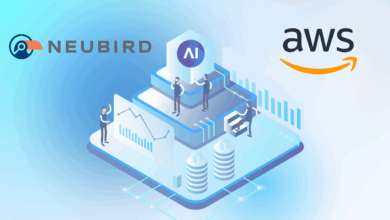With a greater amount of data available than ever before, organisations of all shapes and sizes are pursuing analytics projects in order to gain deeper levels of insight, unearth new value streams and implement new efficiencies.
Nevertheless, an abundance of data doesn’t necessarily make for meaningful analytics. While many businesses have a desire to gain more insights from data which is readily available to them, they often find themselves lacking the necessary resources to be able to do this effectively, as these don’t come cheap or easy. This is often in part due to the on-premise computing power needed to execute such large-scale projects being in short supply. What’s more, there are even occasions where something as simple as provisioning the required servers can take months to complete.
When businesses are looking to gain timely insights, these delays are a very real problem, and can appear to be insurmountable barriers to delivering value. Additionally, the costs involved have the potential to be sizeable, making purchases of the required computing capacity prohibitive. As such, further pressure is placed on the analytics projects to perform to expectations. However, there is a solution available to businesses when it comes to supercharging their analytics.
Cloud analytics
By providing scalable, on-demand resources at a relatively low cost, cloud computing has had a transformational effect on enterprise IT in recent years. This has seen an increasing number of companies starting to utilise these resources to support their analytics.
Looking specifically at analytics, the cloud tends to play two important roles. The first of these is as a cloud-as-an-infrastructure model, in which a cloud provider delivers the core computing power and storage capacity required to mine, source, process, and aggregate data. For many businesses, analytics processes require large quantities of data – gigabytes, terabytes and sometimes even petabytes – in order to deliver value. By effectively being infinitely scalable, the use of the cloud enables organisations to add more firepower to their data processing as and when required. As well as this, the fact that businesses can increase firepower on demand means that they are never overpaying for resources that are not entirely necessary.
The second model seen is software-as-a-service on cloud. This is where analytics and machine-learning systems are deployed in the cloud and run on an ongoing basis. There are numerous advantages to this, including providing additional sharing and collaboration, increased levels of security, reduced costs, and greater levels of control when it comes to presiding over analytics.
Major benefits of managing analytics via the cloud
The general benefits of operating in the cloud are well publicised. These include business continuity, reduced IT costs and scalability. However, there are significant benefits that are specific to conducting analytics in the cloud. The first of these is that the cloud provides on-demand tools and insights. Cloud providers deliver an abundance of solutions and tools as part of their package, which would normally take a great deal of time, effort and expertise for organisations’ in-house engineers to code. Cloud providers are also capable of capturing logging information at scale, enabling companies to filter that information, home in on items of interest, and troubleshoot or improve the performance of existing models.
When cloud technology first rose to prominence, there were concerns regarding data protection and safety. However, cloud analytics platforms are one of the safest places to store data, providing an unparalleled level of security and compliance. Cloud providers enable organisations to encrypt data, both during transfers to the cloud and once it’s stored there. This ensures companies are always compliant with regulatory standards and security requirements. In similar fashion, organisations can retain decades worth of data for auditing and compliance purposes, with a virtually unlimited amount of storage and at a relatively low cost – instead of having to retire data after a certain amount of time as a result of limited on-premises capacity.
Perhaps above all else is that a cloud analytics tool is capable of working to scale. This opens up the doors of possibility, providing businesses with the opportunity to augment their analytics efforts both in an affordable and effortless manner. Therefore, organisations are able to utilise the most advanced analytics projects, irrespective of the existing IT infrastructure which is in place.
Why aren’t all organisations utilising cloud-based analytics?
So, the obvious question is, if cloud analytics platforms offer so many benefits to organisations, why isn’t everyone utilising them? The easy answer to this question is that implementing cloud-based analytics takes a certain amount of expertise. Coding data pipelines and models to ensure they work in cloud environments is a distinct skill. If engineers working at businesses are used to operating with on-premises infrastructure, the chances are they do not possess the required coding skills to implement a cloud analytics solution.
Furthermore, when moving data off premises, major compliance issues could rear their head. This is because servers may be hosted across different countries, making it challenging to adhere to legislation without having the necessary expert guidance.
Businesses wishing to move their analytics projects to the cloud, yet lacking the required levels of skill and knowledge to do so, should seek expertise from organisations who have specific analytics offerings, featuring structured data-driven decision-making throughout the entire company. By doing this, companies can build repeatable processes which encompass data sourcing, ingestion and validation – all of which can be utilised seamlessly across multiple markets. These repeatable processes provide organisations with the tools required to work effectively in the cloud, as well as to scale capacity when required – resulting in a significant reduction in their time to market.




